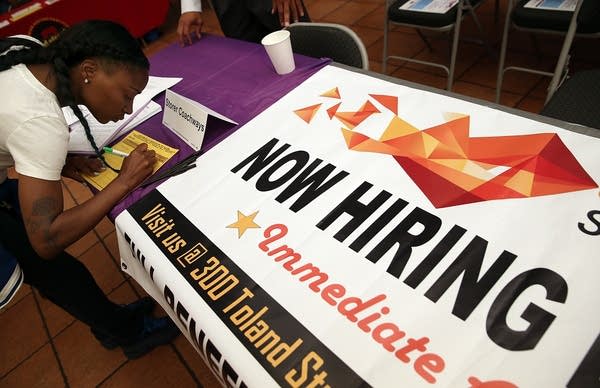Minnesota’s unemployment rate falls to 3.7 percent; wages rising

A job seeker fills out an application during a career fair. Minnesota has now gained back about 70 percent of the more than 416,000 jobs lost since the start of the COVID-19 pandemic.
Justin Sullivan | Getty Images 2014
Go Deeper.
Create an account or log in to save stories.
Like this?
Thanks for liking this story! We have added it to a list of your favorite stories.


